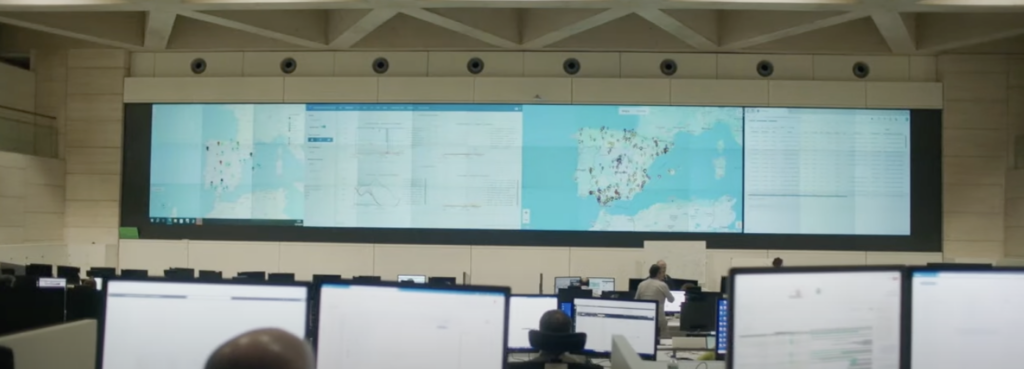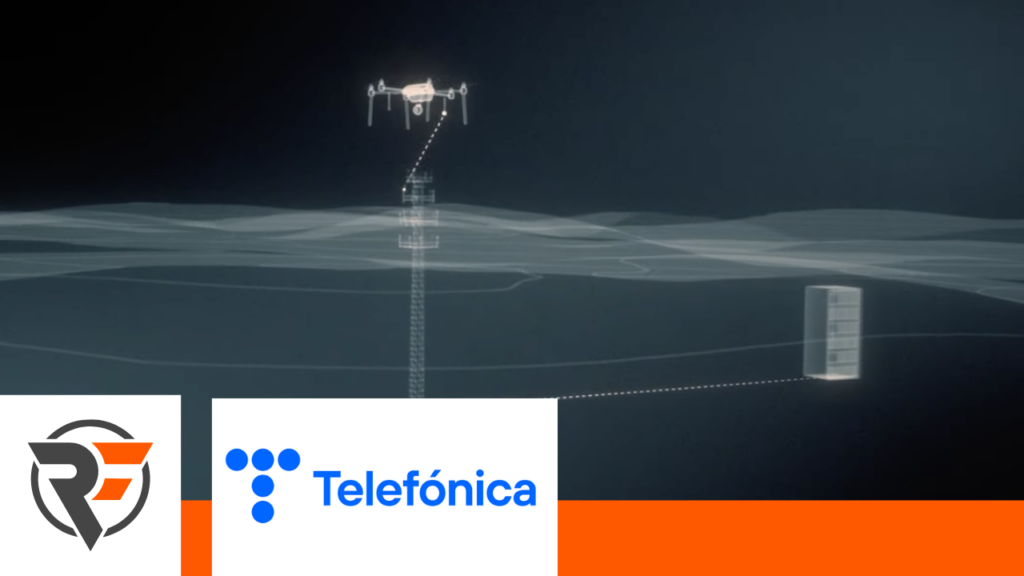At MWC 2025, Telefónica showcased how they took a decisive step in revolutionizing autonomous drone operations by showcasing a comprehensive 5G-powered UAV end to end service that integrates AirborneRF, Nokia Drone Networks, and Telefonica’s 4G/5G network for a seamless user experience. This collaboration is a game-changer, enabling real-time BVLOS (Beyond Visual Line of Sight) drone operations, dynamic risk assessment, and fully automated aerial mobility services.
Telefonica drone solution exemplifies how MNOs can provide full-service solutions and positions MNOs as essential players in deploying scalable UAS operations across various industries, especially those requiring BVLOS capabilities.
Telefónica’s drone service powered by AirborneRF
The MWC 2025 demo highlighted three critical real-world applications, all relying on the combined strengths of Telefónica’s 5G infrastructure, AirborneRF’s real-time connectivity intelligence, and Nokia’s autonomous drone network:
- Medical logistics: Using Nokia Drone Networks’ “drone-in-a-box” solution, drones transported medical supplies between hospitals, relying on AirborneRF’s connectivity data for uninterrupted communication and real-time tracking.
- Environmental monitoring & fire prevention: Drones equipped with thermal sensors identified heat sources, while AirborneRF’s network intelligence optimized flight routes and connectivity over dynamic terrains.
- Warehouse & industrial automation: Drones scanned QR codes for inventory management, leveraging 5G’s ultra-low latency for seamless real-time data transmission.

A “drone-in-a-box” revolution
At the Telefónica stand at MWC 2025, the spotlight was on Nokia Drone Networks, a 5G-enabled “drone-in-a-box” solution designed for large-scale, automated UAV operations. This system integrates with both private and public networks, allowing for secure, autonomous drone deployments across vast geographical areas.
Key features include:
- Fully Automated UAV Deployment – Drones are housed in secure stations, autonomously launching for missions.
- 5G & AI-Powered Flight Control – Enabling real-time drone monitoring, control, and predictive maintenance.
- Integration with AirborneRF & Open Gateway APIs – Providing real-time connectivity insights and risk assessments for safe drone navigation.
Why this matters for the drone industry
- Seamless airspace integration – Nokia Drone Networks, powered by Telefónica’s 5G network, ensures that UAVs can operate safely in regulated airspace without requiring new infrastructure.
- Autonomous decision-making – AI-powered UAVs analyze real-time data, optimizing flight paths while reducing operational costs.
- Scalability – By leveraging AirborneRF’s multi-network connectivity aggregation, drones can seamlessly switch between different cellular networks, ensuring continuous BVLOS operations.
AirborneRF: the backbone of real-time drone connectivity & risk assessment

AirborneRF plays a critical role in Telefónica’s drone ecosystem, offering:
- Dynamic Airspace Connectivity Data – Real-time and predictive insights into 4G/5G network coverage for UAV operations.
- Ground Risk Assessment – Population density data, ensuring compliance with aviation safety regulations such as SORA (Specific Operations Risk Assessment).
- Integration with Open Gateway APIs – Automating flight approvals, route planning, and operational safety measures.
This ensures that Telefónica’s autonomous drone service is not just efficient, but also fully regulatory-compliant and scalable for large-scale deployments.
Open gateway APIs: enabling the next generation of UAV operations
Through GSMA’s Open Gateway in collaboration with AirborneRF, Telefónica is leading the charge in standardizing global API-driven drone operations. The MWC 2025 demo showcased three key APIs essential for safe, scalable drone flights:
- Dynamic Airspace Connectivity API – AI-powered forecasts of network connectivity for UAV missions.
- Population Density API – Real-time assessment of ground risks, helping UAVs navigate over populated areas safely.
- Quality on Demand API – Ensuring uninterrupted connectivity, optimizing network performance for critical UAV applications.
By integrating Open Gateway APIs with AirborneRF and Nokia Drone Networks, Telefónica eliminates barriers to scaling UAV services, making drones more autonomous, reliable, and seamlessly connected.
Expanding the future of drone mobility
This collaboration isn’t just a technological showcase—it’s a blueprint for the future of urban air mobility, smart cities, and industrial automation. With the gradual implementation of U-Space regulations in Europe, the need for reliable, scalable drone connectivity solutions is greater than ever.
What’s next?
- Expansion into smart cities & urban air mobility corridors.
- Further integration with telco partners, expanding BVLOS capabilities.
- Scaling real-time drone data services for logistics, public safety, and critical infrastructure.
Conclusion: Telefónica, AirborneRF, and Nokia are defining the future of Aerial IoT
With 5G, AI, and Open Gateway APIs, Telefónica is not just enabling drones, it’s redefining air mobility. AirborneRF’s real-time data intelligence and Nokia Drone Networks’ autonomous UAV capabilities ensure that this future is safe, scalable, and seamlessly connected.
The era of intelligent, automated airspace management is here.

